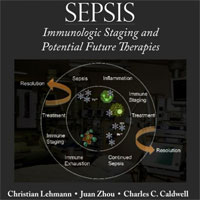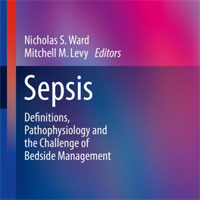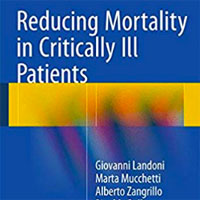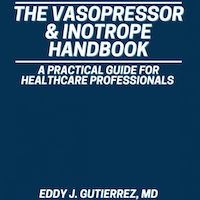Tag: therapy
Angiotensin converting enzyme defects in shock: implications for future therapy
Patients who develop vasodilatory shock, particularly when caused by an inflammatory condition like sepsis or pancreatitis, have evidence of significant endothelial injury as manifested by coagulation disorders and increased... read more
Exploring the Potential Effectiveness of Combining Optimal Nutrition With Electrical Stimulation to Maintain Muscle Health in Critical Illness
This article explores the potential role of nutrition and EMS in maintaining muscle health in critical illness. Within this article, we will evaluate fundamental concepts of muscle wasting and evaluate the effects of EMS,... read more
Feasibility and observed safety of interactive video games for physical rehabilitation in the ICU
Novel use of interactive video games as part of routine PT in critically ill patients is feasible and appears safe in our case series. Video game therapy may complement existing rehabilitation techniques for ICU patients.... read more
Does Lactate Clearance Prognosticates Outcomes in ECMO Therapy
Changes in lactate levels after ECMO implantation is an important tool to assess effective circulatory support and it is found superior to single lactate measurements as a prognostic sign of mortality in our study. Based... read more
Oxygen Therapy for Acutely Ill Medical Patients
It is a longstanding cultural norm to provide supplemental oxygen to sick patients regardless of their blood oxygen saturation. A recent systematic review and meta-analysis has shown that too much supplemental oxygen increases... read more
Proton-Pump Inhibitor Prophylaxis in the ICU
Critical illness can disrupt local and systemic mechanisms that protect against upper gastrointestinal bleeding, a condition that may be associated with increased mortality, particularly among patients receiving extracorporeal... read more
Effect of Targeted Polymyxin B Haemoperfusion on 28-Day Mortality in Patients With Septic Shock and Elevated Endotoxin Level
In adult patients with septic shock and high circulating endotoxin activity, does the use of polymyxin B hemoperfusion therapy significantly decrease 28-day mortality? Among patients with septic shock and high endotoxin activity,... read more
ESPEN Guideline on Clinical Nutrition in the ICU
Following the new ESPEN Standard Operating Procedures, the previous guidelines to provide best medical nutritional therapy to critically ill patients have been updated. These guidelines define who are the patients at risk,... read more
Circulating Biomarkers May be Unable to Detect Infection at the Early Phase of Sepsis in ICU Patients
During the study period, 363 patients with SIRS were screened, 84 having exclusion criteria. Ninety‑one patients were classified as having non‑septic SIRS and 188 as having sepsis. Eight biomarkers had an area under... read more
Using music to stabilize NICU babies as well as their parents
When music therapist Christine Vaskas works with babies in the neonatal intensive care unit, the effect of her interventions are almost always immediately apparent. In 2013, a study led by Joanne Loewy, the Armstrong Center's... read more
Lumping or Splitting in Pediatric ARDS
Improvements in acute respiratory distress syndrome (ARDS) outcomes in adults have been achieved along-side demonstration of the superiority of low-tidal volume ventilation, the relative advantage of a restrictive fluid strategy... read more
Percutaneous Repair or Medical Treatment for Secondary Mitral Regurgitation
Among patients with severe secondary mitral regurgitation, the rate of death or unplanned hospitalization for heart failure at 1 year did not differ significantly between patients who underwent percutaneous mitral-valve repair... read more
No Requirement for Targeted Theophylline Levels for Diuretic Effect of Aminophylline in Critically Ill Children
Aminophylline administration provided a measure of increased diuresis, regardless of dosage, and theophylline trough levels. Therefore, achieving a prescribed therapeutic trough level may not be necessary for full diuretic... read more
Watchdog Group Calls for NIH to Halt Dangerous Study of Sepsis Treatment
A medical watchdog group is calling on the National Institutes of Health to immediately stop the enrollment of patients in a clinical trial of sepsis treatment and launch an investigation of how the study received approval,... read more
Probiotic and Synbiotic Therapy in the Critically Ill
Recent medical history has largely viewed our bacterial symbionts as pathogens to be eradicated rather than essential partners in optimal health. However, one of the most exciting scientific advances in recent years has been... read more
Early Versus Late Initiation of Renal Replacement Therapy in Critically Ill Patients
Early initiation of renal replacement therapy (RRT) effect on survival and renal recovery of critically ill patients is still uncertain. We aimed to systematically review current evidence comparing outcomes of early versus... read more
Plasma Volume, Tissue Oedema, and the Steady-state Starling Principle
The Michel–Weinbaum steady-state Starling principle has important consequences for clinical practice. The hope that biophysical intravascular colloid therapy with albumin or plasma substitutes can deliver plasma volume... read more
High Flow Nasal Cannula (HFNC) – Part 1: How It Works
The use of heated and humidified high flow nasal cannula (HFNC) has become increasingly popular in the treatment of patients with acute respiratory failure through all age groups. I first started using it as a pediatric intensive... read more
Effect of procalcitonin-guided antibiotic treatment on clinical outcomes in ICU patients with infection and sepsis patients
Procalcitonin-guided antibiotic treatment in ICU patients with infection and sepsis patients results in improved survival and lower antibiotic treatment duration. Mortality in the 2252 procalcitonin-guided patients was significantly... read more
Hemodynamic Consequences of Severe Lactic Acidosis in Shock States
Deleterious hemodynamic effects of severe lactic acidosis are largely suggested by experimental data, although not fully confirmed by human studies. Pending the effectiveness of an etiological treatment, there is no efficient... read more
Legacy Emanuel Medical Center Plants With Purpose
The benefits of access to nature have been shown in a variety of settings and contexts, notes Roger S. Ulrich, an international leader in evidence-based healthcare design and a consultant to Legacy Health’s therapeutic... read more
Cryptococcus Neoformans Meningoencephalitis
A 36-year-old man presented to the emergency department with a 2-week history of fever, headache, drowsiness, and photophobia. He was previously healthy and was sexually active with men. The physical examination was notable... read more









